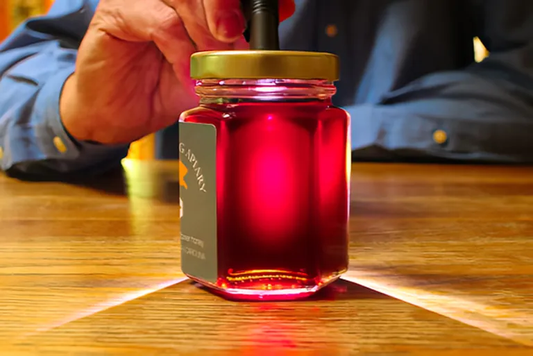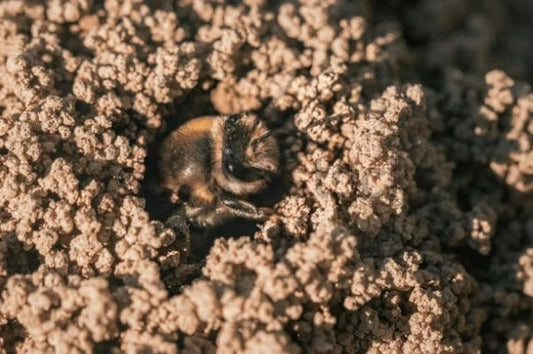Bees are fascinating creatures of nature with some remarkable abilities. From pollinating your favorite flowers to navigating vast distances in search of nectar, they have a lot of chores to complete in their life. But what about water? What happens when bees come in contact with water? Can bees swim, or do they just struggle to survive? Here is everything you need to know about the relationship of bees with water.
Can bees swim?
Have you ever seen one swim? The simple answer is no. Unlike some insects that are able to glide effortlessly on the water surface or even dive beneath the surface, bees are not adapted to water. However, these flying bugs do have a very unique way of escaping if they find themselves trapped in water.
How do bees escape water?
Now that we are clear with the answer to the question of whether can bees swim, we need to understand that they are not entirely helpless in the water. When a bee lands on the water's surface, its wings get wet, which makes it impossible for them to take off. However, instead of sinking, bees use their wings to generate ripples on the surface of the water and then use these small waves to propel themselves forward. Also known as hydrofoiling, bees use this technique to surf towards safety.
It is important to note that this method will require a huge deal of energy to be expended by the bee and it can only hydrofoil for around ten minutes before becoming exhausted.

Ripples on water surface
Why can’t bees swim?
Nature designed bees to fly. Not swim. The design of their wings is so lightweight that when they beat them rapidly, it generates enough lift to help the bees fly. However, in case the wings get wet, they become very heavy and ineffective. Plus, bees also have tiny hairs covering their entire bodies, which makes them even more susceptible to getting weighed down by water. In order to survive, the bee must escape and reach a dry spot quickly.
How long can bees survive in water?
Anytime a bee finds itself trapped in water, time is of the essence. Bees are able to hold their breath for about 5 minutes by closing their spiracles—tiny openings on their bodies used for breathing. While doing this helps them avoid the risk of immediate drowning, it does not mean that they are able to survive in water indefinitely. If they are not able to escape safely, they risk drowning due to exhaustion.
Do bees need water to survive?
Despite all the dangers water poses for bees, they still need it to survive. Like other creatures, they too will need to drink water to survive. Plus, they also collect water to regulate the temperature inside their hive. During hot summer days, worker bees will distribute droplets of water around the hive and fan their wings repeatedly to create an evaporative cooling effect. This helps to keep the colony comfortable and prevents overheating during the summer months.

Are bees attracted to swimming pools?
It is not uncommon to see bees hovering around water sources like pools. And there is a very good reason for it. These water bodies act as essential sources of hydration for the bees. Unfortunately for them, pools often become accidental traps. The smell of chlorine in water mimics the natural minerals found in water, which ends up attracting the bees. And without a safe place to land, they might end up on the surface of the pool.
How to prevent bees from landing in my pool?
Although these flying buzzers are vital for the environment, you might not want them constantly visiting your pool. Fortunately, there are some easy tips that can help keep the bees at bay.
Provide an alternative water source.
Place a shallow dish of fresh water with some floating objects inside. This helps the bees stay hydrated while landing on a safe spot without getting their wings wet and getting stuck.
Use plants as deterrents
Some plants, like wormwood or eucalyptus, are considered to be natural bee-repellants. Planting these around the pool can help with the bees.
Cover the pool
Try using a pool cover when the pool is not in use. This prevents bees from landing on the water surface and perishing.
Final thought: Can bees swim?
So, can bees swim? The answer remains to be no. But these bugs do have a remarkable survival mechanism to escape water in a very unique way. While hydrofoiling is impressive, it is not foolproof, and many bees still die if they cannot reach dry land in time. Bees struggle with water and by taking some simple measures to help them when they struggle we play a small but meaningful role in protecting these essential pollinators.
Excited to learn more about the wonderful world of bees? Learn more about these fascinating creatures from our full blog here.




